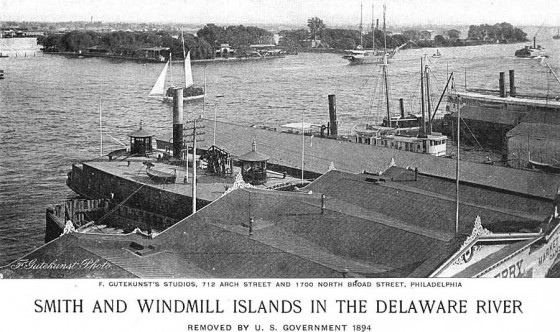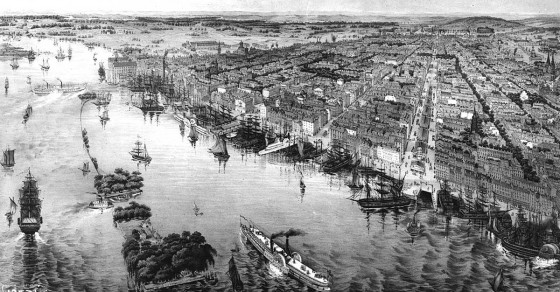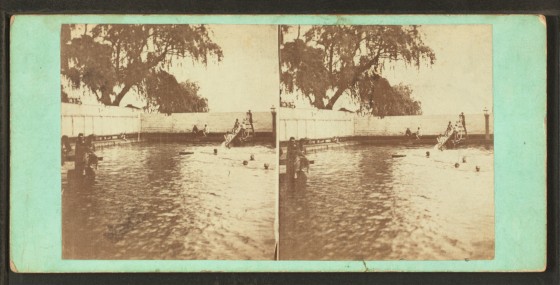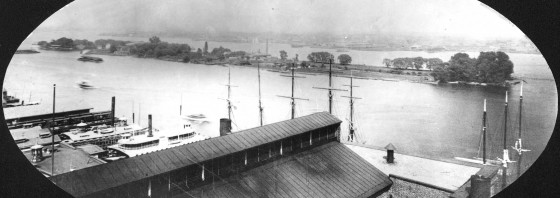You’ve probably never heard of Smith or Windmill Island and you’re definitely not alone. These two islands, separated by a canal, once stood right in the middle of the Delaware River, just across from Center City. The islands took different shapes and forms over the years, and were a well-known part of the city in their time. And now they are no more.
The first record of the islands dates back to 1683, when two muddy mounds in the middle of the Delaware were first described. By the middle of the 18th Century, an octagonal Windmill was built on the northern end. Over the years, deposits from the river made the islands grow larger, fusing the two mounds into a single hunk of land. Wharves and a few little structures soon dotted the islands, and use of the island reached a point that a bridge was considered in 1820 that was ultimately never built.
A canal was dug in 1838, again splitting the island into two sections, forming what one could think of as the aquatic negative 100 block of Walnut St. Smith Island was the northern island, and the southern island was dubbed Windmill Island, so named for its windmill (yes, the windmill that was originally located in the north was moved to the southern island at some point). The canal was a boon to the Camden ferry, which no longer had to go all the way around the island and its sand bars to reach its destination.
In the mid 19th century, the islands were serving multiple functions. One section of Windmill Island became a well-known low-class pleasure spot, another section was a coal yard, and other areas were access points for multiple ferry companies (ferries were a little more popular back then). Smith Island was home to the appropriately-named Smith’s Hotel. Famous Philadelphian Jacob Ridgeway owned a couple of parcels there, as did the Pennsylvania and Reading Railroads. There were even people who owned the sand bars that were only exposed when the river was at low tide.
As seagoing technology changed and ships became larger, the islands became more and more of a burden. Rumblings about removing the islands started in 1878, and the Federal Government ended up having to step in and remove them in the 1890’s. We wonder what could have been if those islands were still around. Could they have been a unique tourist destination? Might they have spurred more development at the Philadelphia or Camden waterfronts? Could their presence have saved the ill-fated Skylink Aerial Tram? Guess we’ll never know.
GroJLart, philaphilia.blogspot.com




